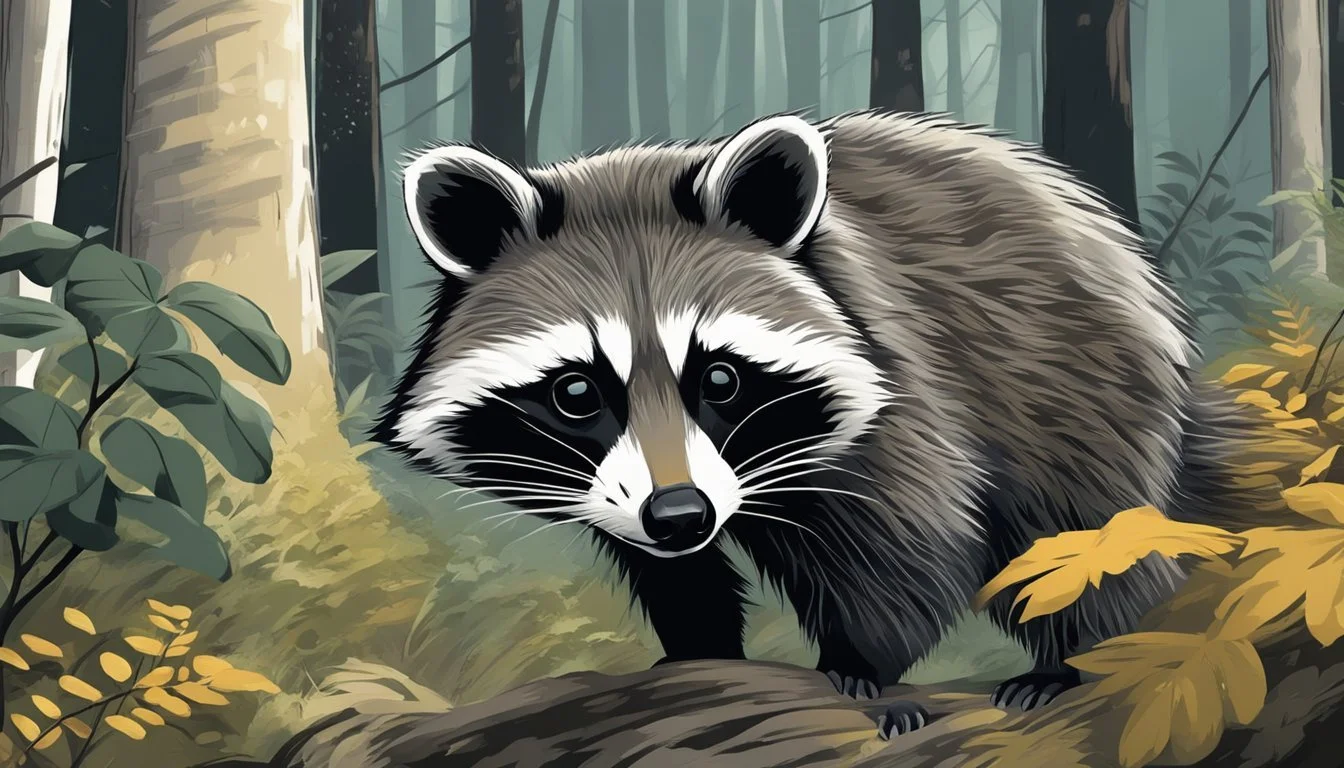Raccoon Hunting for Beginners
Essential Tips for a Safe and Ethical Start
Raccoon hunting season attracts outdoor enthusiasts who are interested in the challenges and rewards of small game hunting. Raccoons are often considered a nuisance species and are known for their adaptability and resourcefulness, which makes them a widespread presence across various habitats. Hunters pursue raccoons for population management, fur harvesting, and as a traditional outdoor sport. Given their nocturnal nature, hunting these animals requires specific strategies that differ from other game hunting.
Engaging in raccoon hunting provides a unique opportunity to understand and participate in wildlife management. It supports the balance of ecosystems by keeping raccoon populations in check, which can prevent the spread of certain diseases and the destruction of property and crops. Aspiring raccoon hunters must prepare by learning about raccoon behavior, habitat preferences, and the regulations governing their harvest. Hunting seasons typically range from late fall to winter, ensuring that populations are managed during times when raccoons are most active and their pelts are in prime condition.
Understanding Raccoon Behavior
An effective raccoon hunt starts with a solid understanding of raccoon behavior, including their breeding habits, habitat preferences, and typical feeding patterns.
Breeding and Seasonal Habits
Breeding: Raccoons have a distinct mating season which peaks in late winter and early spring. Young raccoons are usually born in spring after a gestation period of about 63 days, with litters ranging from 2 to 5 kits.
Seasonality: In winter, raccoons can be less active but do not hibernate; however, they often stay in their dens during extreme cold. During summer, their activity increases notably, especially at night.
Habitat Preferences
Urban and Rural: Raccoons adapt to various habitats. They are present in urban areas due to the abundance of food sources, but also thrive in rural areas and woods, especially those with ample water sources.
Denning: Preferred denning sites include hollow trees, under decks, and even abandoned buildings. The Raccoon population is particularly dense near ponds, wetlands, and other bodies of water.
Feeding Patterns
Diet: Raccoons are omnivorous and have a diverse diet that includes fish, nuts (how long do nuts last?), berries, insects, and eggs. They tend to forage in areas where food is plentiful and easily accessible.
Food Sources: In urban settings, raccoons often exploit garbage cans and compost bins, while in the wild, they forage for natural food sources. This behavior can lead to property damage and conflicts with humans.
Signs of Raccoon Presence
Tracks and Scat: Signs of an active raccoon presence include overturned bins, scat deposits, and paw tracks. Damage to gardens, crops, or structural entries also indicates raccoon activity.
Noises: They make various sounds such as chattering and growling, which can be heard during their active hours at night.
Common Threats and Diseases
Rabies: While not all raccoons carry diseases, they can be vectors for rabies. An encounter with a diseased raccoon can pose significant health risks to humans and pets.
Predators: Raccoons face threats from predators such as coyotes and large birds of prey. Nonetheless, they are also known for their ability to adapt and survive in the presence of these threats.
Legal and Ethical Considerations
When you decide to hunt raccoons, you must be thoroughly informed of the legal frameworks in place as well as abide by ethical hunting practices. Adherence to regulations and ethical guidelines ensures the sustainability of the tradition and the responsible treatment of wildlife.
Hunting Laws and Regulations
Each state has distinct laws governing hunting raccoons, which typically include season dates, license requirements, and bag limits. For example:
Michigan: Hunters are required to possess a valid license, and there is a choice of coon hunting season.
Indiana & Ohio: Have similar licensing requirements for coon hunting season and may also specify hunting hours alongside bag limits.
Tennessee: They might have regulations that pertain to hunting on public versus private land, as well as differing bag limits based on the region within the state.
When you hunt raccoons you must verify the rules with the state’s wildlife agency or conservation department to ensure compliance.
Ethical Hunting Practices
In addition to legal adherence, hunters are expected to practice ethical coon hunting, which encompasses:
Respect for the quarry: This includes not to hunt raccoons more than needed or permitted by law, and striving to achieve a quick, humane kill.
Consideration of the ecosystem: Recognizing that raccoons can be pests in certain contexts, hunters should understand their part in wildlife management and avoid practices that could unbalance the ecosystem.
Training practices: Before engaging in coon hunting, novices should learn from experienced hunters to ensure that they are well-prepared and knowledgeable.
Hunting raccoons is as much about tradition as it is about the management of the raccoon population. By adhering to state-specific regulations and ethical guidelines, hunters contribute to maintaining the integrity and future to hunt raccoons.
Gear and Equipment
When preparing for hunting raccoons, selecting the proper gear and equipment is crucial. This section outlines the essentials, from firearms and coon hunting dogs to clothing and navigation tools, ensuring the hunter is equipped for effectiveness and safety.
Firearms and Ammunition
A .22 caliber rifle is an excellent choice for coon hunters, providing sufficient power without damaging the pelt excessively. For coon hunters who prefer shotguns, smaller calibers are recommended, such as .410 or 20-gauge. Ammunition choice is also important, with predator and varmint cartridges offering the performance needed for a clean, ethical shot.
Hunting Dogs and Breeds
A well-trained hunting dog is invaluable for tracking and treeing raccoons. Popular breeds on coon hunts include the Treeing Walker Coonhound, Plott Hound, Bluetick Coonhound, Black and Tan Coonhound, and American English Coonhound. These breeds are recognized by the United Kennel Club for their hunting proficiency and are favored by raccoon hunters for their keen sense of smell and persistence.
Traps and Baiting
Traps can be an effective method for coon hunting. Box-type traps should be baited with foods attractive to raccoons, such as sweets or fish. When handling traps, using a rope to open the trap from a distance can increase safety. It's essential to follow state regulations regarding trapping and baiting when you hunt raccoon.
Clothing and Footwear
Sturdy boots are a necessity for navigating rough terrain, providing both protection and support. Hunters should wear durable, weather-appropriate clothing, often in camouflage or earth tones to blend with the environment. Gloves are also advisable for protection and warmth.
Lighting and Navigational Tools
A good-quality hunting light or headlamp is critical for night hunts. Some hunters may prefer a spotlight for its long-range illumination. Additionally, a reliable scope can enhance precision in low-light conditions. Using GPS or a compass is crucial for navigation to avoid getting lost in the wilderness.
Hunting Strategies
Successful raccoon hunting hinges on effective strategy, from spotting your quarry to navigating the challenges of night hunting. These strategies are pivotal during coon hunting to maximize their time in the woods and emerge with a fruitful outcome, so hunters are always keen to pick up the lastest raccoon hunting tips.
Scouting and Locating Raccoons
Scouting is a crucial first step. Hunters should look for signs such as food scraps and raccoon damage to identify active areas. Observing trees for hollows and looking near water sources can pinpoint likely raccoon habitats. In the summer and autumn, raccoons frequent water sources and may be found in clear woods - a prime location for setting up a hunt.
Night Hunting Techniques
Night hunting is the most common time to hunt raccoons, as they are nocturnal. A headlamp or spotlight is essential for visibility in the dense woods. Hunting dogs, specifically trained coonhounds, can greatly enhance the experience by tracking scent trails. When using lights, it’s important to sweep the beam across trees, looking for the reflective glow of raccoon eyes.
Treeing and Calling
During coon hunting, when an animal is spotted, hunters use treeing, where a dog chases the raccoon up a tree, making it easier to locate. Calling techniques like purring calls or a barking sound may coax a raccoon into sight if they are well hidden. These vocalizations can mimic raccoons and intrigue them enough to reveal their position.
Dealing with Challenges
Hunters must be prepared for dangerous situations in the outdoors. This includes navigating rocky mountains and dense forests safely. They should be aware of their surroundings and be cautious of other wildlife. While the terrain can be challenging, with forethought and preparation, these obstacles can be navigated effectively.
Processing and Utilization
After a successful coon hunting, processing and utilizing the harvest is essential. This section details how to skin and clean the raccoon, prepare the meat for consumption, and manage the pelt for potential trade opportunities.
Skinning and Cleaning
To properly skin and clean the animal after raccoon hunting, hunters must exercise precision and care. One initially cuts the raccoon's ankles, wrists, and around the head. Following this, they carefully detach the pelt from the body. The objective is to preserve the integrity of the raccoon pelts and meat. It is important to remove all fat and flesh from the raccoon pelts and to clean the carcass thoroughly before further processing.
Tools Required:
Skinning knife
Fleshing knife
Gloves
Conservation and Management
Conservation and management are critical aspects of coon hunting. They ensure the sustainability of the sport and the protection of ecosystems where raccoons are native.
Population Control
Raccoon populations require management to prevent overpopulation which can lead to significant ecological damage. In some areas, raccoons can decimate bird populations by preying on eggs, impacting species such as turkeys. Effective population control through regulated hunting helps maintain a balance, ensuring that raccoon numbers stay within ecologically responsible limits. Some states operate modern coon hunting, such as coon hunting competitions to demonstrate the hunting skills of the coon dog and raccoon huntersand control the population.
Tradition: Coon hunting has deep roots, with techniques that have been passed down for generations. This tradition of management ensures that raccoon numbers are kept in check, while maintaining the hunter's role in conservation.
Damage Control: High raccoon densities can lead to increased predation pressure on native wildlife, including endangered species. Hunting can reduce the instances of such damage.
Habitat Preservation
The conservation of raccoon habitats such as wetlands and clear woods near water sources is pivotal in coon hunting management strategies. Maintaining these habitats helps preserve the natural behaviors and health of raccoon populations.
Wetlands: These are crucial for a variety of wildlife, not just raccoons. Protecting these areas ensures that raccoons have adequate water sources, and hunting practices should always consider the impact on these vital ecosystems.
Clear Woods: A focus on habitat preservation includes maintaining forested areas clear of excessive undergrowth, which encourages a balance in raccoon foraging habits and shelters them from severe weather conditions.






